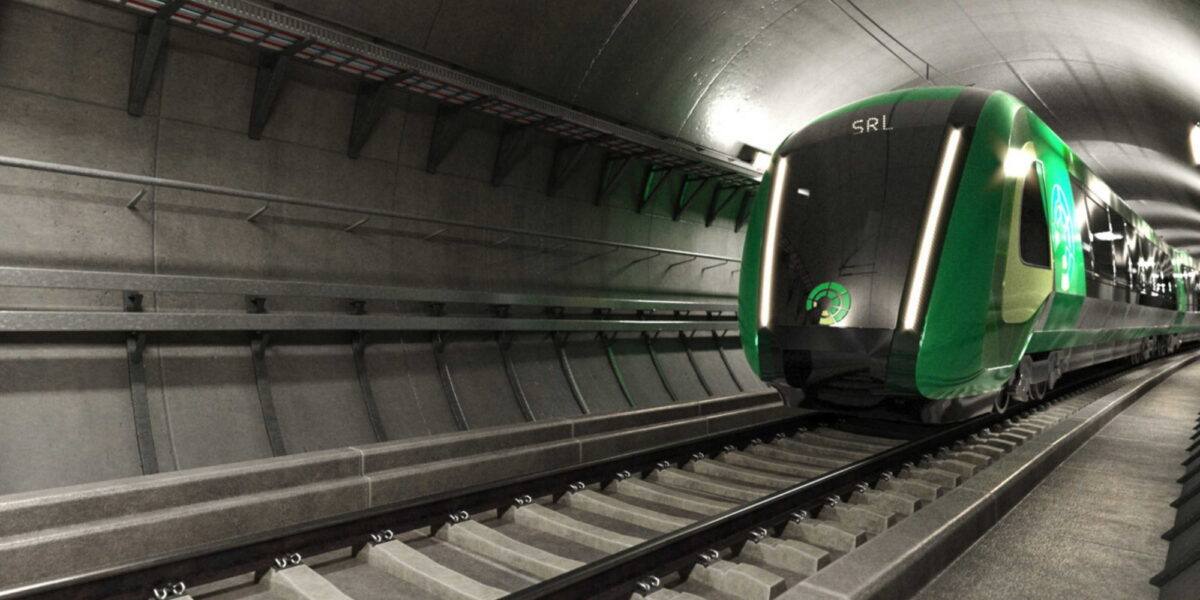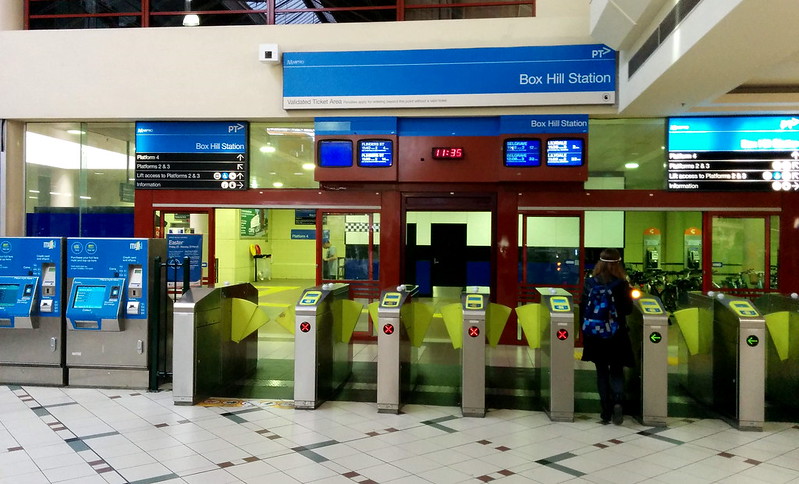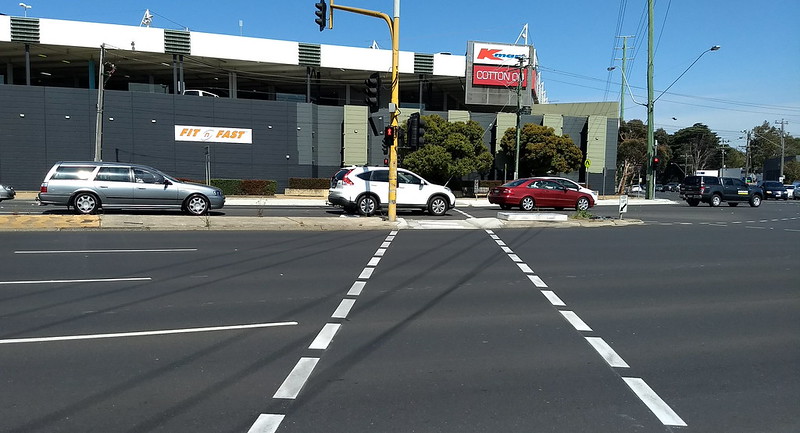The Suburban Rail Loop continues to move ahead. Phase 1 (Southland/Cheltenham to Box Hill) is now officially called “SRL East”, aiming to start running in 2035. Last week the State Government announced funding for major works to the tune of $9.3 billion, about a third of the cost.
Detailed planning is proceeding, with more information having been published in the last few months, including the EES (Environmental Effects Statement), which makes a lot of detail public.
Given the huge cost involved, I thought it would be good to reflect on some of the factors the SRL will need to really be a success. These are in no particular order.
SRL high frequency
High frequency on the SRL is an obvious requirement. While SRL will be a standalone line (enabling technology such as driverless trains), it is specifically designed to connect passengers to existing lines. This means waiting times need to be minimised.
The Business And Investment Case document released in August says that the initial services will be every 10 minutes all day, and every 6 minutes at peak times.
It also says the plan will be for later frequency upgrades to as often as every 2 minutes.
High frequency – existing Metro lines
Good connecting trains are also important. This is the other side of the equation – if passengers are connecting to and from the existing lines, there needs to be an uplift of service frequencies right across the rail network.
Imagine stepping off your every-10-minutes SRL train to find you’ve got a 20 or 30 minute wait for your connection? This is the reality at many stations at times. (It can be even longer on some other lines.)
This would not be very expensive to fix, and would have benefits right across Melbourne.
Good feeder buses (and trams)
It’s not just train connections that will be important. How do people get to the stations?
To rely on park and ride would artificially constrain patronage, so that won’t work – even if there was space for lots of parking, which there isn’t.
Better local buses are vital, for those who can’t get to an SRL station under their own steam, and are coming in a direction not served by rail.
Most buses in the suburbs around the SRL stations are laughably bad, with hopelessly infrequent, inadequate services. Many of them also have confusing, indirect routes.
Fixing it across Melbourne is important, of course. Other cities such as Houston have had great success reforming and simplifying routes, making them more direct and investing in higher frequencies, with the result being healthy growth in patronage.
Interestingly, the EES recognises the problems of relying on car access, but not the importance of bus access.
There will also be connections to trams at Box Hill, and at Monash Uni a potential future light rail (or possibly “trackless tram“, eg an elaborate bus). Trams mostly run to okay frequencies… except in the evenings, when the wait can be 20-30 minutes.
All of these connecting frequencies need to be up to scratch.
Quick convenient interchange
Easy interchange to other rail, tram and bus lines is important alongside high frequencies.
You don’t want a long walk between platforms. Easy, quick, seamless is the key – and seamless includes not having to exit through fare gates and enter again to make a train to train connection.
I’d have to say, some of the best metro systems worldwide don’t actually do outstandingly well at this. Long corridors with lots of steps and escalators are surprisingly common. London Underground is notorious for it, and Singapore can be similar.
But they still need to be minimised where possible.
Importantly, the government has committed – repeatedly (and as recently as a couple of weeks ago) – to SRL stations having paid area connections to all existing stations.
However the recent publication of detail for the Southland (“Cheltenham”) station indicated a fair distance to walk between the new and existing stations, including an overpass over Bay Road. It’s unclear if this connection will be weatherproof.
Good access to traffic generators
The same goes for access to the traffic generators adjacent to the stations. For maximum competitiveness with car travel, it needs to be as quick and easy as possible to walk from the new stations to destinations including Westfield Southland, Monash Uni, Deakin Uni and the various shops and destinations around Box Hill.
The precinct maps show some of the stations will be a fair way from the destinations they are intended to serve. It looks suspiciously as through they are prioritising what’s easier to build.
For instance the Monash Uni station will be some distance north of the campus rather than underneath the main buildings or near the existing bus interchange. The campus may gradually develop further north, but the planned station site is currently about 300 metres from the nearest campus building, 900 metres from the Ming Wing, and about a kilometre from the Synchotron.
At Southland, the SRL station will be across the road in the park, a lengthy walk from the existing station, the centre, and the bus interchange. They could move the bus interchange, but then that would be less convenient for the centre. One solution might be to build an additional bus stop near the SRL station and send some or all bus routes through it. (City of Kingston has some good proposals for the park precinct.)
All this is quite a contrast to the Metro 1 stations such as Parkville and ANZAC, which are very well-located for the precincts they serve.
Intermediate stops
The emphasis for SRL is speed of travel between a limited number of stations – focused on connections to existing lines, and major traffic generators.
But this also means long gaps between some stations. Southland (“Cheltenham”) to Clayton is about 7km as the crow flies – the actual route will be longer.
There’s talk of provision for a future station near Warrigal Road, but no commitment to actually build it.
No wonder the Heatherton locals are angry about the stabling yard being built in green wedge land – they will get all of the impact, but few of the advantages of the project.
It’s similar for other sections. The line will pass under thousands of homes, but only a fraction of these will be walking distance to a station. Even if the line got a few more intermediate stops, local connecting buses would still be important.
Walking, cycling access
So if some of the stations are distant from the places they serve, bus connections are patchy, and most people are a fair way from a station, what else can they do to improve access?
Walking and cycling access needs to be top notch. The planning documents talk a bit about providing plenty of cycle parking, which is good.
But thanks to decades of prioritising cars, the planned stations are all nearby to big fast suburban roads that are incredibly hostile to anybody who is not in a car. The intersection closest to Southland (pictured above) is utterly horrible to walk around.
Improvements in local paths (for both modes), on-road protected bike lanes, and better traffic light priority for walkers and cyclists will also need to be prioritised. Removing slip lanes would also be a plus.
Success
All of these points have something in common. You don’t build a train line and run trains for the sake of it. It’s not just a line on a map.
If people are going to use it en masse, the experience needs to be quick, easy, seamless, and as close to convenient as possible to hopping in the car.
The differences between bad outcomes and good outcomes may require more planning effort and higher cost. But some – like better feeder services – provide huge direct and indirect benefits for minimal extra cost compared to the overall project.
Hopefully the government is looking at all of these issues, so that the new SRL line is as successful as possible.





20 replies on “Things the Suburban Rail Loop needs to succeed”
Very thoughtful and well researched blog – thanks.
I get the impression that the issues you raise are second order problems that the Government has pushed aside to be considered in the 2030s – when it’ll be too late.
The indicated location for Glen Waverley is not ideal, the line will run under the existing station and bus stops, imagine how more convenient it would be for there to be entrances on Coleman Parade, up to the existing platform and also into the bus stops on Railway Parade. Of course building in the open on council carparks would be easier.
The Monash location only makes sense if they are not permitted to be on university land. As you said it is a long way from things, plus there is a huge height difference between the north roundabout and lake and where the station is supposed to be, it will have to be very deep.
The Burwood location would also be better for Deakin access if north of Burwood Highway, at least put entrances on both side and add a tram stop above.
Something surprising I picked up from the EES was the Emergency Support Facility that will go up in place of the Mitre 10 in Syndal.
Why does the Suburban rail loop need to prioritise being fast over providing access to the people living along it’s alignment. I can’t believe the plan is to spend $30 billion to add only 2 new stops. Yes they’re at locations where there’s high demand but for this kind of money you’d expect them to enable 10s or 100s of thousands of extra journeys from people who currently drive. Are there really that many people who live exactly at Box Hill and work at Monash and are currently unhappy taking a bus but would take a train?
As a kid I used to love joining up the unconnected sections of Melbourne’s freeways and imagining how the inner city rail loop could be reactivated. But it’s not good policy. The same people who judged the East West link and demanded it’s scrapping should be looking at this boondoggle and asking the same questions. Just because you can join them up doesn’t mean it will produce a positive cost benefit relationship when it costs 10s of billions of dollars.
Good analysis Daniel. It would be great to know the potential additional costs of some of these suggestions such as a direct interchange to the platforms at Glen Waverley. My feeling has always been that we end up with suboptimal designs because we are always striking a balance between needs, wants, cost and disruption. Some decisions like the lack of stops and not putting a station at Heatherdale seem very questionable however.
On another note I recently got to ride the Sydney Metro and all I can say is: Wow
The SRL has such a great opportunity to be city (suburbs) shaping, but i’m increasingly getting the nauseous feeling that opportunity is being squandered by the need / desire to be SEEN to be doing SOMETHING…$30bn may end up being pissed against the wall (just for the east section) if all of the above critically important attributes aren’t addressed.
The few intermediate stops issue is bananas. A Melb Metro train stops for 30-40 seconds, add slow down / speed up time, thats 1 min per stop max (this is verified by comparing travel time for express vs stopper trains on say frankston line). Given the rolling stock is likely to be “light rail-esque” on SRL, thats probably being conservative (i imagine more like 30-40 seconds total time cost per station). a stop every 2-3 kms should be the minimum over stage 1’s 25 kms route – with new stops at (1) southland, (2) cnr warrigal rd, (3) heatherton, near developable land on Clayton rd, (4) clayton station, (5) monash uni sth – near scenic blvd / wellington rd main entrance (walkable to bus Xchange), (6) Notting hill nth – again redevelop able hight industrial land (7) Glen waverley – or preferably Mt Waverley to avoid unnecessary 5km easterly diversion, (8) “Brickworks station” Cnr Middleborough / burwood hwy next to apartment / dense urban development, (9) Deakin Uni, (10) Box Hill…4 stations more than are planned.
oh, i forgot the obvious – connect to Sandringham line at Sandringham, with an intermediate stop on Bay st (next to / near the apartment towers)
Also @Stirlingthorley, Monash was very eager to have the station located more centrally (i have this on very good authority) – the chosen location (300m to the north of the university “tradesmans’ / back door”) was the SRL design team / engineers priority. ie, no issues (from the university’s stand point) with being located on university land. SRL just wanted straighter lines and were more interested in the alignment approach to & from Clayton / GW.
Can’t understand the lack of intermediate stations at Warrigal Rd, Dingley etc.
Why isn’t it connected to the Sandringham line?
Only an extra few kms, do it now, and save a fortune having to do it in the future.
I’m sure a nice bus would be perfect between Sandringham and Cheltenham. I don’t think it’s worth wasting another few billion getting the line down there.
It’s what? A 10 minute bus trip? and you can have more stops.
Good observations. An additional important point on the trade off of speed vs number of stations is the ability to bypass stations or have small, frequent, self driven trains which only stop at a smaller stations if someone intends to get off there. Modern algorithms could make this an easy decision, in a way similar to how modern elevators group travellers by the floor they are going to, or how the Las Vegas / Boring co tunnel goes direct to your specific destination.
A lesson! Quick and convenient interchange. Sydney failed in this. Where lenght of the interchange was purposefully lenghty for the redevelopment of sites previously locked away. Rather than the intended quick and convenient modal change. That would encourage use of other transport options
Going from Southland to Doncaster via GlenWaverly, seems to be something of a big detour. It needs to run via Oakliegh and Chadestone.
The Glen Waverly via Monash route would be great if, we had a Southland – Glen Waverly – Ringwood route along with say, a Dandenong – Glen Waverly – Doncaster route too.
@TranzitJim: We already have a Glen Waverl(e)y to Ringwood service, the 742, but like most bus services in Melbourne, its infrequent timetable lets it down and the side street layout north of Glen Waverley is disjointed, forcing the bus to zigzag all over the place. Bonus points, it also runs to Monash, Oakleigh and Chadstone (just not Southland as it’s out of the way).
I am concerned we will replicate the problems we have now, in particular when stations are near “arterial” roads and no priority is given to pedestrian access. I’m not talking a set of lights, mean speed reductions, clearly marked pedestrian access, and where traffic lights are used, all way stop, actual priority, and enforced red light cameras.
We cannot even get this right at Southern Cross, while Flinders Street is only slightly better.
It is a good point about frequency, State government recently tried lowering fares to encourage off peak use. They would be better placed to stop punishing passengers with infrequent services and failing connections. I have lost count of the number of stops where a bus (20 minutes or worse) arrives coincident with a train (20 minutes or worse), ensuring all interchanging passengers have the longest possible wait.
Another thing it needs to succeed is high density around the stations
[…] also struck by how the Metro Tunnel is achieving some things the Suburban Rail Loop may not: stations located directly under the places they serve, and a station in an urban renewal precinct. […]
Hi Daniel,
Thank you for a very well written analysis.
I agree 100% that the proposed location of Southland (“Cheltenham”) station is hopeless.
The station is too far away from the existing Southland station.
I think the only solution is to rebuild the existing Southland station directly above Bay Rd.
There can be direct walkways from Frankston Line platforms to Metro Line platforms.
It will be further to walk to the shopping centre, but quick transfers between trains is the absolute highest priority. Shoppers will have to walk an extra 170m, that is not the end of the world.
I also agree with Andrew. The SRL should stop at Mt Waverley, not Glen waverley.
[…] current station designs partly compromise the end-to-end journey times. To maximise the benefits, the stations should really be modified to cut walking times to major destinations and to other […]
[…] The challenge for Labor is to keep SRL costs under control, and preferably to make alterations so more benefits materialise. […]
[…] to connect to the existing rail network, but it won’t reach its full potential without frequent connecting services on all modes, to ensure people can easily get to and from the stations from all […]